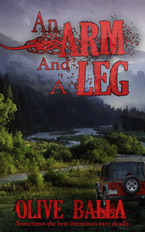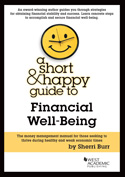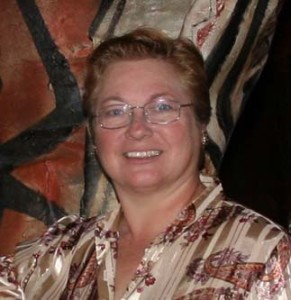by Sherri L. Burr
 To write and seek publication is to risk rejection. The Los Angeles Review of Books published a story on March 26, 2024, about the rejection letters Nobel Laureate Toni Morrison wrote when she was an editor at Random House.[i] “I found it extremely honest, forthright, and moving in ways I had not expected it to be, but it is a shuddering book and one that offers no escape for any reader whatsoever,” Morrison said to one author. Her letter concluded, “You don’t want to escape, and I don’t want to escape, but perhaps the public does and perhaps we are in the business of helping them do that.” In other words, a story can be too miserable.
To write and seek publication is to risk rejection. The Los Angeles Review of Books published a story on March 26, 2024, about the rejection letters Nobel Laureate Toni Morrison wrote when she was an editor at Random House.[i] “I found it extremely honest, forthright, and moving in ways I had not expected it to be, but it is a shuddering book and one that offers no escape for any reader whatsoever,” Morrison said to one author. Her letter concluded, “You don’t want to escape, and I don’t want to escape, but perhaps the public does and perhaps we are in the business of helping them do that.” In other words, a story can be too miserable.
I received my first rejection letter at age 16. I had pitched a story to Guidepost Magazine about an encounter with my minister. The editor found the event less inspiring than I did. Many more rejection letters and emails would follow. Rejection can be hard on the ego, but never sending anything out risks never getting published. That can create a deeper blow to our internal psyche.
When I wrote my first co-authored book, Art Law: Cases and Materials, my co-authors and I were rejected by every major legal book publisher. After a smaller publisher offered us a contract, my male co-authors insisted on going back to every major legal book publisher to let them know we had an offer and ask if they would like to match it. That attempt to leverage a small offer into a bigger one failed. All the major legal book publishers rejected us a second time.
The reception was different for my next co-authored book, Entertainment Law: Cases and Materials in Film, Television, and Music. One small publisher accepted the book based on an oral pitch from my co-author and me. I insisted we first complete a book proposal to shop to all the major legal book publishers. The biggest publisher in the genre not only accepted our book but wanted a complete manuscript within a month. I was glad that we were almost finished with the book when we shopped the proposal.
As writers who help others, we also risk rejection in our charity work. Barbara Kerr Page, who I would later work with at the Albuquerque Tribune, wrote a letter to Tony Hillerman on November 2, 1975, asking him to be a judge in the New Mexico Press Women’s annual communications contest. Five days later, Hillerman wrote the following response:
While I’m complimented by your invitation (and the flattering way you phrased it), I’m going to have to beg off this fall. Last summer (when it seemed autumn would never come) I made a whole bunch of to-do things, and I’m now facing the fact that those speeches aren’t written and the deadlines aren’t met. Therefore, I made a pledge that I wouldn’t take on anything new until I keep the old promises.
I’ve enjoyed judging for the NMPW in the past and I hope you’ll give me the opportunity in future years when I’ve better learned how to plan ahead.
Three cheers to Tony Hillerman for knowing when his plate was full and to kindly say no. This is the kind of rejection letter that we can all learn from.
Like many authors, I consider the worst kind of rejection to be silence. I would rather receive a form letter or the return of my letter with the word “NO” in big letters than silence. With silence, you are left to assume your project has been rejected or lost.
With some of Toni Morrison’s letters, she gave helpful suggestions. According to the Los Angeles Review of Book’s article mentioned earlier, in rejecting a modern Western in 1978, Morrison wrote, “It simply wasn’t interesting enough—the excitement, the ‘guts,’ just weren’t there. I am returning it to you herewith.” What a masterful way to say the book was boring.
In another rejection letter, Morrison wrote that the manuscript was “put together in a way that made it difficult to enjoy. The scenes are too short and packed too tightly. Motives were lacking.” With rejection advice like that, the author knows it’s time to return to work.
Whatever is stopping you from sharing your work for publication, do not fear rejection. You just might receive helpful advice.
Equally important, rejection letters can help prove that you are in the business of writing. From a tax perspective, even if you have little or no income, you may still be able to deduct your expenses related to your writing business. Consult your accountant on the value of rejection letters to demonstrate you sought to sell your work.
Rejection letters also call on you to have faith in your work. J.K. Rowling’s Harry Potter was rejected twelve times. Jack Canfield and Mark Victor Hansen’s first Chicken Soup for the Soul was rejected 140 times. Tony Hillerman’s first book was rejected by one New York publisher who advised him to “get rid of the Indian stuff.” At the time of his death in 2008, more than 20 million Hillerman books were in print.
Once, I received a rejection letter from an academic publisher after my book had been published. It gave me great pleasure to inform the publisher that during the year delay, my book had been published and nominated for the Pulitzer Prize in History. I did not receive a response.
[i] See There Is No Point in My Being Other Than Honest with You: On Toni Morrison’s Rejection Letters | Los Angeles Review of Books (lareviewofbooks.org)
 Sherri Burr’s 27th book, Complicated Lives: Free Blacks in Virginia: 1619-1865 (Carolina Academic Press, 2019), was nominated for the Pulitzer Prize in History. West Academic published Wills & Trusts in a Nutshell 6th Ed., her 31st book, on October 31, 2022. A graduate of Mount Holyoke College, Princeton University, and the Yale Law School, Burr has been a member of SouthWest Writers for over 30 years.
Sherri Burr’s 27th book, Complicated Lives: Free Blacks in Virginia: 1619-1865 (Carolina Academic Press, 2019), was nominated for the Pulitzer Prize in History. West Academic published Wills & Trusts in a Nutshell 6th Ed., her 31st book, on October 31, 2022. A graduate of Mount Holyoke College, Princeton University, and the Yale Law School, Burr has been a member of SouthWest Writers for over 30 years.





 What can I say? This is my first attempt to do anything at all with a blog on a website. I’ve always wanted to, but haven’t had the time to learn. Suddenly I find I’ve accepted the challenge to learn how to make this work. My biggest fear is hitting the wrong button and screwing up entirely
What can I say? This is my first attempt to do anything at all with a blog on a website. I’ve always wanted to, but haven’t had the time to learn. Suddenly I find I’ve accepted the challenge to learn how to make this work. My biggest fear is hitting the wrong button and screwing up entirely